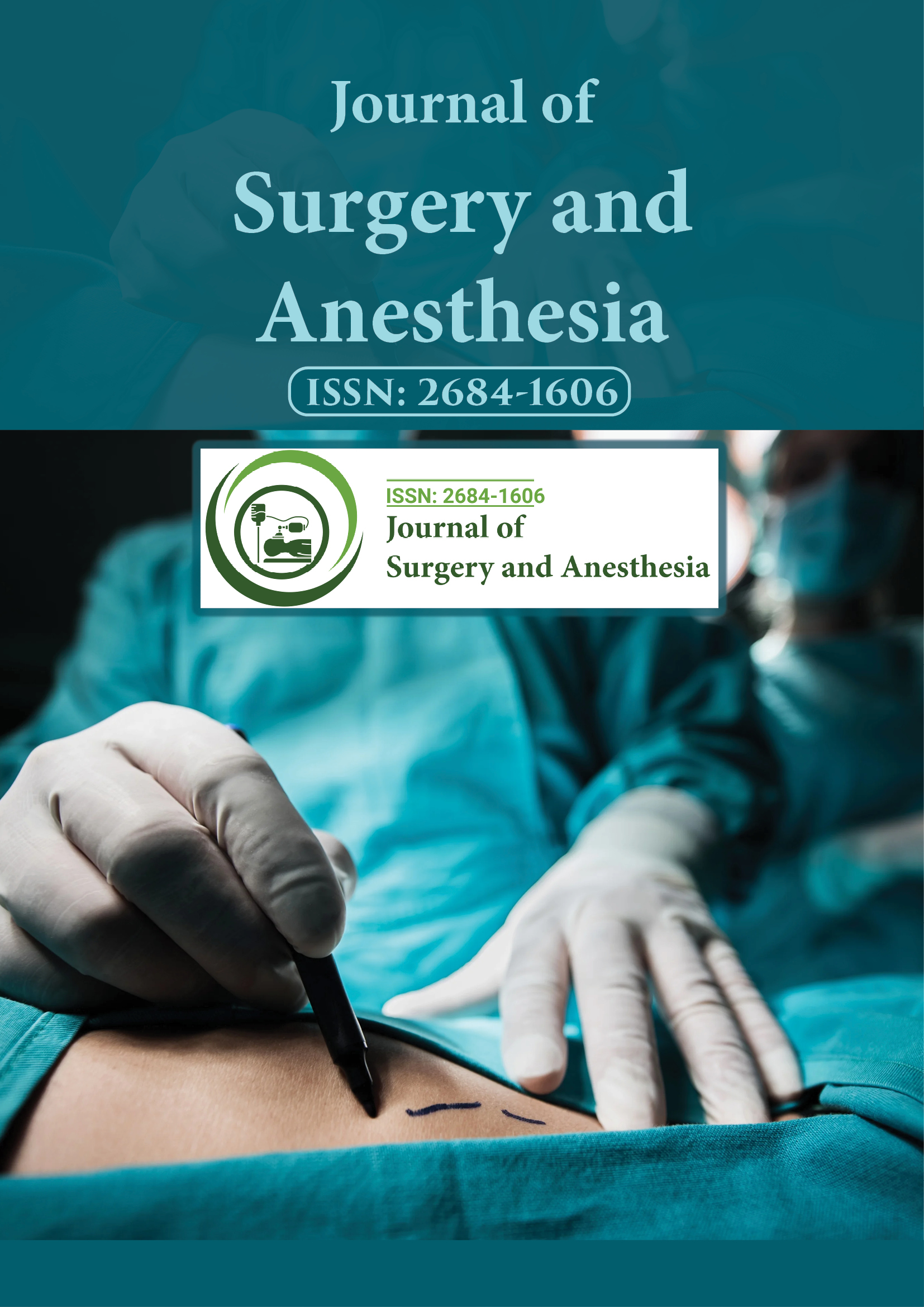Indexed In
- Google Scholar
Useful Links
Share This Page
Journal Flyer

Open Access Journals
- Agri and Aquaculture
- Biochemistry
- Bioinformatics & Systems Biology
- Business & Management
- Chemistry
- Clinical Sciences
- Engineering
- Food & Nutrition
- General Science
- Genetics & Molecular Biology
- Immunology & Microbiology
- Medical Sciences
- Neuroscience & Psychology
- Nursing & Health Care
- Pharmaceutical Sciences
Commentary - (2024) Volume 8, Issue 4
Role of Patient-Reported Experience Measures in Peri-Anesthesia Care
Brogan Woerner*Received: 26-Nov-2024, Manuscript No. JSA-24-27801; Editor assigned: 28-Nov-2024, Pre QC No. JSA-24-27801 (PQ); Reviewed: 12-Dec-2024, QC No. JSA-24-27801; Revised: 19-Nov-2024, Manuscript No. JSA-24-27801 (R); Published: 26-Dec-2024, DOI: 10.35248/2684-1606.24.8.269
Description
Peri-anesthesia care involves the comprehensive process of managing patients before during and after anesthesia procedures. This phase of care is critical in ensuring patient safety and comfort as well as optimizing clinical outcomes. With the growing recognition of the importance of patient-centered care in healthcare delivery Patient-Reported Experience Measures (PREMs) have emerged as vital tools to assess and improve the quality of peri-anesthesia services. PREMs gather valuable insights directly from patients allowing healthcare providers to evaluate the overall experience from the patient’s perspective.
Patient-reported experience measures are instruments used to assess the quality of care as perceived by patients. They differ from Patient-Reported Outcome Measures (PROMs) which focus on the clinical impact of a medical intervention. PREMs are designed to evaluate patients’ satisfaction with various aspects of healthcare including communication with healthcare providers emotional support and the overall process of receiving care.
In the context of peri-anesthesia care PREMs are particularly important as they allow healthcare providers to gauge the effectiveness of preoperative consultations anesthesia administration and postoperative recovery. These measures help identify areas where patients may feel uncomfortable anxious or dissatisfied with the care they received. By capturing patients' first hand experiences healthcare teams can enhance the delivery of care and ensure that patients’ expectations and concerns are addressed.
When developing or evaluating PREMs for peri-anesthesia care it is important to consider the various aspects of the patient journey that influence their overall experience. These domains provide a comprehensive view of the patient’s experience throughout the peri-anesthesia process.
One of the first interactions patients have with the healthcare team is during the preoperative consultation. This phase includes explaining the procedure and anesthesia options addressing any patient concerns and preparing the patient for surgery. Effective communication at this stage is essential for reducing anxiety and ensuring that patients feel informed and involved in decisionmaking. PREMs that assess this domain help identify areas where communication can be improved to ensure that patients fully understand the risks and benefits associated with their care. The actual administration of anesthesia is a significant aspect of perianesthesia care. PREMs evaluate patient comfort during the procedure including the level of pain or discomfort experienced and the professionalism of the anesthesiology team. This is an area where patients often have limited awareness due to the sedative nature of anesthesia but their experience still contributes to their overall satisfaction with care. Anesthesia-related PREMs can provide valuable feedback on how patients perceive their care in this regard. The recovery phase involves monitoring the patient as they awaken from anesthesia and managing any side effects such as nausea or pain. PREMs that assess postoperative recovery focus on the level of support patients receive in managing these side effects. Additionally the recovery environment and the attentiveness of nursing staff are key factors influencing patient experience. Collecting feedback on these areas can help healthcare providers refine their recovery protocols and provide more personalized care. The aggregate of the preoperative communication anesthesia administration and postoperative care results in the overall patient experience. Measuring overall satisfaction allows healthcare providers to understand how well the entire peri-anesthesia process meets the needs of patients. PREMs that focus on general satisfaction provide an overview of the effectiveness of the entire care process and highlight any gaps in service delivery.
There are various ways to collect patient-reported experience data in the peri-anesthesia setting. One common method is through surveys or questionnaires administered to patients after their anesthesia experience. These surveys may include Likert-scale questions asking patients to rate their level of satisfaction with different aspects of their care such as communication clarity and comfort. Additionally open-ended questions may be included to allow patients to provide more detailed feedback on their experiences. Another approach involves the use of patient interviews which offer an opportunity for patients to elaborate on their experiences in a more conversational format. Interviews provide in-depth qualitative data that can help healthcare providers better understand the context of patients’ experiences and identify specific areas for improvement.
With advancements in technology some institutions have adopted digital platforms for collecting PREMs. These platforms allow patients to complete surveys electronically either before or after their procedure making it easier to gather real-time feedback. Digital tools also enable healthcare providers to analyze data more efficiently and track trends over time.
Citation: Woerner B (2024). Role of Patient-Reported Experience Measures in Peri-Anesthesia Care. J Surg Anesth. 8:269.
Copyright: © 2024 Woerner B. This is an open access article distributed under the terms of the Creative Commons Attribution License, which permits unrestricted use, distribution, and reproduction in any medium, provided the original author and source are credited.
